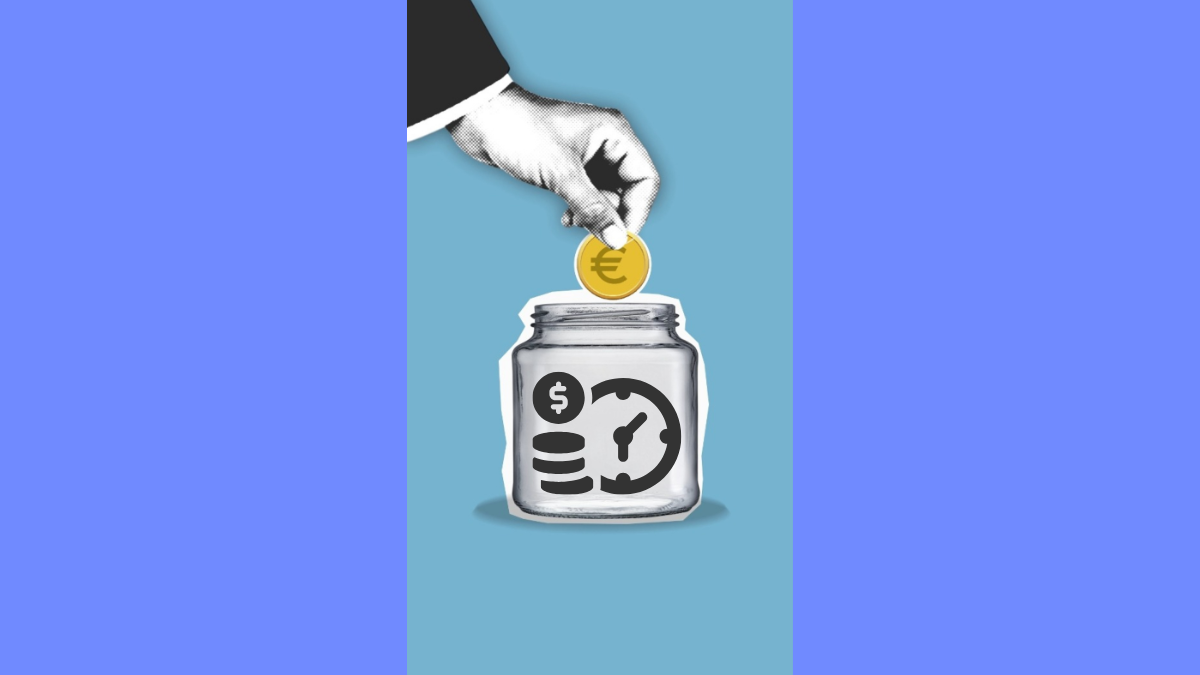What Is Investment Risk (and Why It Matters)
Investment risk is the possibility that your money won’t grow the way you expect — or worse, that you could lose some of it. But that doesn’t mean you should avoid risk. In fact, accepting the right amount of risk is essential to long-term investing success.
There are different types of risk to understand:
- Market risk: Stock prices can go up or down due to economic news, interest rates, or investor emotions. For example, during the 2020 pandemic, global markets dropped sharply — but recovered just as dramatically.
- Inflation risk: If your money is earning less than the inflation rate, you're losing purchasing power over time. Keeping large amounts of cash in a traditional savings account is a common source of this risk.
- Liquidity risk: You may not be able to access your money when you need it without a penalty or loss. Real estate and retirement accounts like 401(k)s can fall into this category.

Why It Matters
Every investment decision carries risk — even "safe" ones. Understanding risk isn't just for professionals; it's the foundation of smart financial planning.
When you avoid risk completely, you may miss out on potential returns that help you beat inflation and build wealth over time. On the other hand, taking on too much risk without a strategy can lead to panic selling, losses, and long-term setbacks.
This is why having a balanced view of risk is essential. Smart investors don’t try to eliminate risk — they learn to manage and adjust it based on their goals, timeline, and personal comfort level.
Risk Tolerance: Your Personal Comfort Zone
Your risk tolerance is how much volatility you can handle emotionally and financially. It's influenced by:
- Your age
- Your income and job stability
- Your financial goals (e.g., buying a home vs. retiring in 30 years)
- Your experience with investing
See our full guide on How to Find Your Risk Tolerance
Risk ≠ Recklessness
Not all risk is bad — and not all low-risk options are smart. In fact, avoiding stocks entirely out of fear may actually increase your risk of not meeting your long-term goals.
By choosing only "safe" places for your money, you might be guaranteeing that it loses value over time.
Action Step: Start Small, Stay Consistent
You don’t need to bet big to take advantage of smart risk. Start by:
- Investing consistently, even in small amounts
- Diversifying your investments across asset classes
- Learning how different assets behave (see our post on Stocks vs. ETFs vs. Index Funds)
Why Risk Can Be a Good Thing
When people hear “risk,” they often think danger — but in investing, risk also means opportunity. Without risk, there’s no reward. Understanding how to use risk strategically is what separates average investors from great ones.
Here’s why risk can actually work in your favor:
- Higher risk = higher potential return (if you stay invested).
- Younger investors can take more risk because they have time to recover.
- Volatility creates opportunity — smart investors buy when prices dip.
- Risk teaches discipline and patience, two key traits for wealth-building.
- Example: Over the past 30 years, the stock market has had many crashes — yet long-term investors who stayed in typically came out ahead.
Want to go deeper? Learn how to Match Your Investments to Your Financial Goals and Avoid Emotional Investing when markets move.
You can also explore Investopedia’s risk-reward calculator or this helpful breakdown from FINRA on understanding investment risk.
Common Types of Risk (With Examples)
Not all risk is the same. Understanding the different types of risk can help you build a smarter investment strategy and avoid surprises that could derail your financial goals.
Here are the most common types of investment risk — and what they actually look like in the real world:

Market Risk
This is the risk that your investments will lose value due to overall market declines — even if the companies themselves are doing fine.- Example: You own shares in a profitable tech company, but during a recession, the whole market crashes and your stock drops 30%.
Inflation Risk
If your money isn’t growing faster than inflation, you’re actually losing purchasing power — even if your balance is going up.- Example: You have $10,000 in a savings account earning 1% annually, but inflation is running at 3%. In real terms, your money is shrinking.
Liquidity Risk
Some assets can’t be quickly converted into cash without taking a loss. That’s liquidity risk.- Example: You need $15,000 fast for a medical emergency but most of your money is tied up in a property or collectibles that take months to sell.
Interest Rate Risk
This mostly affects bondholders. When interest rates rise, the value of existing bonds tends to fall.- Example: You’re holding a bond that pays 2%, but the market is now offering 5%. No one wants your lower-yield bond, so its value drops.
Credit Risk (Default Risk)
This is the risk that a bond issuer (like a company or government) won’t be able to pay back what they owe.- Example: You invest in corporate bonds from a company with a weak balance sheet. It later files for bankruptcy and stops paying interest.
Concentration Risk
Putting too much of your portfolio into one investment — or one type of investment — increases risk.- Example: 80% of your portfolio is in tech stocks. If the tech sector crashes, your entire investment takes a big hit.
Currency Risk
If you invest internationally, changes in exchange rates can affect your returns.- Example: You invest in a Japanese ETF. The fund gains 10%, but the yen loses 10% against the dollar. Your return is wiped out.
Emotional Risk (Behavioral Risk)
This is the risk of making impulsive decisions based on fear, hype, or media headlines.- Example: You panic-sell your investments during a temporary market dip — and miss the rebound.
How to Measure Risk Tolerance
Your risk tolerance is your ability to handle losses without panicking — and it’s different for everyone. Knowing yours helps you choose investments you can stick with long term, even when the market gets bumpy.
Here’s how to start evaluating it:
- Ask yourself questions: How would you feel if your portfolio dropped 20% in one year? Would you sell, wait, or buy more?
- Consider your time horizon: The more time you have, the more risk you can take. Someone retiring in 30 years can recover from dips — someone retiring next year can’t.
- Use a quiz: Take our Risk Tolerance Quiz to find out your comfort level and what types of investments may match it.
- Think about your personality: Are you a worrier? Do you check your balance daily? If market swings cause anxiety, a conservative approach may be better for you.
For professional insights, check out FINRA’s guide on investor psychology and Vanguard’s risk tolerance framework.
Low, Medium & High-Risk Investment Examples
The more you understand each level of risk, the easier it is to choose investments that align with your goals. Here’s how common assets are generally categorized:
- Low-Risk Investments
- High-yield savings accounts
- Certificates of deposit (CDs)
- Short-term U.S. Treasury bonds
- Medium-Risk Investments
- Diversified bond funds
- Blue-chip dividend stocks
- Balanced mutual funds
- High-Risk Investments
- Individual growth stocks
- Cryptocurrencies
- Small-cap funds or emerging markets ETFs
Matching Risk Level to Your Financial Goals
Investing isn’t about finding the “best” investment — it’s about finding the right one for your specific goals and timeline. That’s where matching your risk level comes in.

Let’s break it down by goal type:
- Short-term goals (under 3 years)
- Keep money in low-risk options: high-yield savings, CDs, or short-term bonds.
- Example: Saving for a car, wedding, or emergency fund.
- Mid-term goals (3–10 years)
- Use a balanced approach: a mix of bond funds, large-cap ETFs, and dividend stocks.
- Example: Down payment on a home or starting a business.
- Long-term goals (10+ years)
- Go higher risk for higher reward: stock ETFs, index funds, or growth stocks.
- Example: Retirement, college fund, or generational wealth.
Diversification: The Smart Way to Manage Risk
Diversification means not putting all your eggs in one basket. Instead of betting on a single stock or sector, you spread your investments across different asset types — which reduces risk while keeping your growth potential strong.
Here’s how to diversify smartly:
- Mix asset classes: Combine stocks, bonds, and cash equivalents.
- Use diversified products: ETFs like VTI or mutual funds like SWPPX automatically include hundreds of assets.
- Diversify across sectors: Tech, health care, energy, consumer goods, etc.
- Add global exposure: International ETFs like VXUS offer global diversification.
How to Adjust Your Portfolio Over Time
Your investment strategy shouldn’t stay the same forever. As your life changes — income increases, goals shift, or retirement approaches — your portfolio should evolve too.
Here’s when and how to adjust:
- Major life events: Got married, had a child, or changed careers? Revisit your investment goals. Use our goal-based investing guide to realign your strategy.
- Approaching retirement: Reduce risk gradually by shifting into more stable assets like bond funds or dividend stocks. See our age-based allocation breakdown.
- Portfolio drift: Over time, your asset allocation may skew due to market changes. Rebalancing — usually once or twice a year — keeps your risk level in check. Learn how in our portfolio rebalancing guide.
- Change in risk tolerance: If you’ve become more conservative or more aggressive, adjust accordingly. Retake the risk tolerance quiz as your life changes.

Quick assessment to identify your personal comfort level with investment risk.
Learn More
Official breakdown of the types of risk and how they impact your portfolio.
Learn More
Explains how to use diversification to balance risk and reward in your investments.
Learn More




